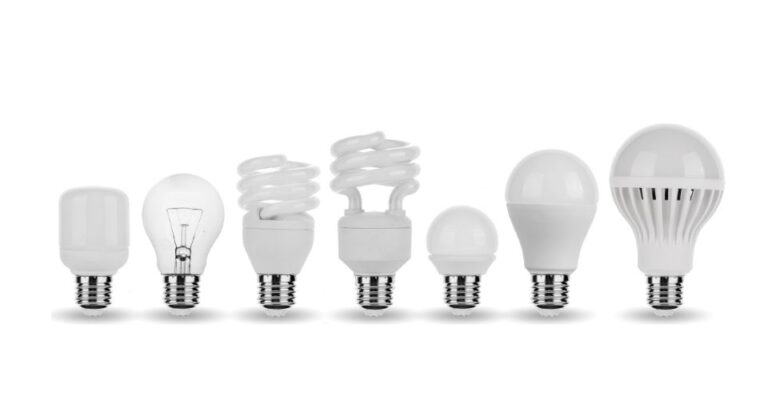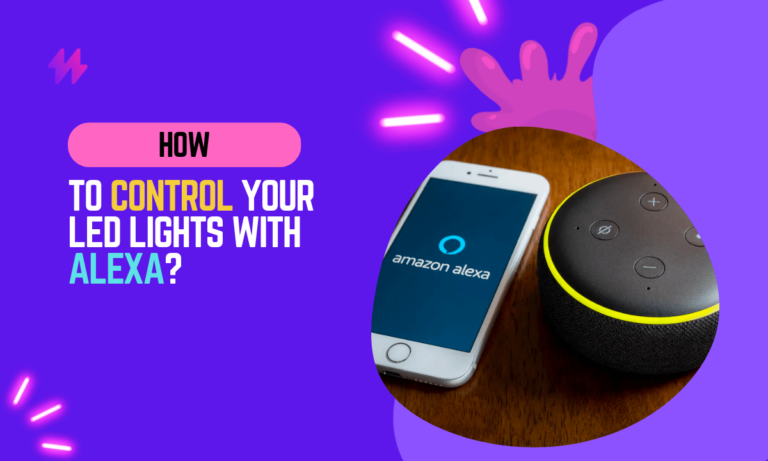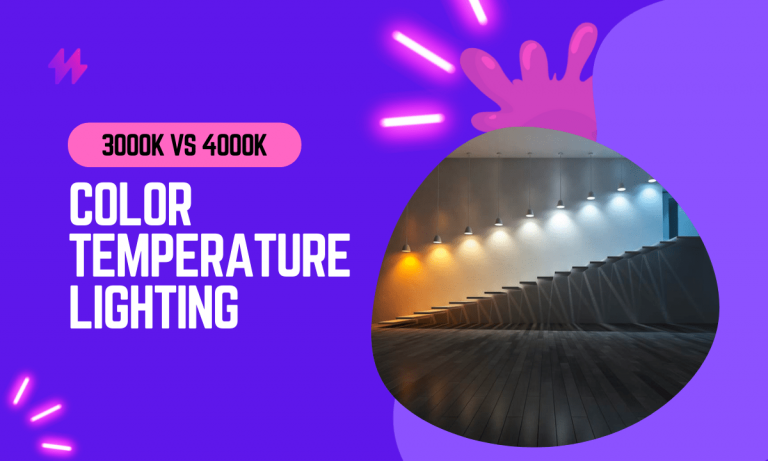How to Choose the Best 4000k LED Bulbs?

4000k LED bulbs are a popular option for home and office lighting, as they provide a natural light color that is easy on the eyes. However, it can be difficult to know which 4000k LED bulb is best for your needs. This article will help you understand the different factors to consider when choosing a 4000k LED bulb.
Choosing the right type of “led light bulbs” is crucial for achieving the desired illumination in your home or office. By considering the available options such as “led edison bulbs,” “smart bulbs,” and “longest-lasting light bulbs,” you can make an informed decision that best meets your lighting needs.
How to Choose the Best 4000K LED Bulbs: Understanding 4000K in LED Lighting
The color temperature of a light bulb is measured in Kelvin (K), and it indicates how warm or cool the light emitted by the bulb will appear.
A lower Kelvin rating means the light will appear warmer, while a higher Kelvin rating means the light will appear cooler. 4000k and 5000K falls right in the middle of the color temperature scale, making it a popular choice for many people.
The color temperature of a light bulb is measured in Kelvin (K), and it indicates how warm or cool the light emitted by the bulb will appear. A lower Kelvin rating means the light will appear warmer, while a higher Kelvin rating means the light will appear cooler. 4000K and 5000K falls right in the middle of the color temperature scale, making it a popular choice for many people. When selecting bulbs, consider how each type can enhance your home lighting needs while ensuring energy efficient lighting. Smart bulbs use innovative technology to adjust the brightness and color spectrum, providing versatility in various lighting applications.
Uncovering the Benefits of 4000K LED Bulbs: What You Need to Know
There are many benefits to choosing 4000k LED bulbs for your home or office.
Using 4000K LED lightbulbs can provide an effective lighting solution that balances brightness and energy efficiency, making them suitable for both home and office environments. When considering how to choose the best 4000K LED bulbs, it’s important to evaluate their ability to meet different brightness needs while providing superior light quality compared to traditional incandescent light bulbs.
- First, they provide a natural light color that is easy on the eyes.
- Second, LED bulbs are more energy-efficient than traditional incandescent bulbs, so you’ll save money on your energy bill each month.
- Third, LED bulbs last much longer than traditional incandescent bulbs, so you won’t have to replace them as often.
Color of 4000K Light: Understanding Its Characteristics and Impact

4000K light color is a great option for those who want a warm and inviting feel, but don’t want the “orange” look that comes with traditional incandescent lighting.
4000K light is also a good choice for those who want a cooler, more sterile look in their home or office.
Selecting energy-efficient lighting can significantly enhance both ambiance and practicality in any space. Incorporating options like LED lamps and smart light bulbs allows you to create versatile lighting that caters to your specific home lighting needs.
Understanding the Brightness of 4000K LED Bulbs
The brightness of an LED bulb is measured in lumens (lm). The higher the lumen rating, the brighter the light.
Most 4000k LED bulbs have a lumen rating between 800 and 1600.
The brightness of an LED bulb is measured in lumens (lm). The higher the lumen rating, the brighter the light. Most 4000K LED bulbs have a lumen rating between 800 and 1600. For those seeking specific lighting options, different bulbs can cater to various environments, from ambient lighting to task lighting. When selecting bulbs, energy-efficient lighting solutions like LED emitters provide long-lasting performance and lower energy consumption compared to traditional incandescent bulbs.
Understanding Wattage Requirements for 4000K LED Bulbs
The wattage of an LED bulb is not related to its brightness. Instead, it indicates how much energy the bulb uses.
For example, a 4-watt LED bulb can be just as bright as a 40-watt incandescent bulb.
When choosing a 4000k LED bulb, look for one that has a low wattage rating. This will help you save money on your energy bill each month.
4000K light bulbs can come in:
When considering energy-efficient options, it’s also essential to pay attention to the types of wattages available for LED lighting to ensure you choose the best bulbs for your needs. Additionally, both compact fluorescent lights (CFLs) and halogen bulbs offer varied brightness and energy-saving capabilities, enhancing your overall lighting experience in your home or office.
- 40 Watt
- 60 Watt
- 75 Watt
- 100 Watt
Selecting the Perfect Shape and Size for Your 4000K LED Light Bulb

Now that you know the basics of choosing a 4000k LED bulb, it’s time to consider the different shapes and sizes available.
The most common LED light bulb shape is A19. This is the standard shape that is used in most home and office lamps.
If you’re looking for a more decorative option, you may want to choose an LED bulb with a globe or candelabra shape. These bulbs are often used in chandeliers or other decorative lighting fixtures.
When it comes to size, LED bulbs are available in:
- 2 inch
- 4 inch
- 5 inch
- 6 inch
- 8 inch
- 10 inch
- 12 inch
To choose the right size for your needs, measure the inside of your light fixture to see how much space you have to work with.
You should also consider the lumen output of the bulb when choosing a size. A larger bulb will produce more light, so it’s important to choose one that is the right size for your needs.
Also read: How to avoid color temperature inconsistencies in 4000K LED bulb
When shopping for LED light bulbs, make sure to explore the various styles available, including A19 bulbs, which are particularly popular in residential settings. It’s also beneficial to consider using smart bulbs that can enhance energy efficient lighting and allow for customization in brightness and color to suit different occasions.
Final Thoughts on 4000K LED Lighting Benefits and Features
In conclusion, selecting the best 4000K LED bulbs involves considering their applications, energy efficiency, and overall quality to ensure they meet your lighting needs effectively. A 4000K color temperature provides a bright, neutral white light that is closer to daylight, making it an excellent choice for areas requiring clear visibility and a crisp environment. It is particularly suitable for kitchens, bathrooms, offices, and other workspaces where accurate color perception and focus are essential. When choosing these bulbs, it is crucial to look at the lumens rating, which indicates the amount of light the bulb emits. A higher lumens rating means a brighter light, which enhances task performance and can contribute to better productivity in workspaces.
Furthermore, it is essential to consider the compatibility of 4000K LED bulbs with existing fixtures and dimmers. Ensuring that the bulbs are dimmable if needed and that they fit well with the design and functionality of your current fixtures can prevent additional costs and compatibility issues. Additionally, checking the Color Rendering Index (CRI) of the bulbs is vital; a higher CRI means the light will render colors more accurately, which is crucial in areas where color differentiation is important, such as in graphic design or culinary spaces. Finally, opting for LEDs from reputable manufacturers who offer warranties and good customer support can safeguard your investment.
LED bulbs are available in a variety of sizes, so make sure to measure the inside of your light fixture before making your final decision.
By carefully evaluating these factors, you can select high-quality 4000K LED bulbs that provide reliable, efficient lighting while enhancing the functionality and aesthetics of your space.
How To Choose The Best 4000k LED Bulbs | Comparing 4000K LED Bulbs with Other Color Temperatures
Selecting the right lighting for your space involves understanding how to choose the best 4000K LED bulbs compared to other color temperatures like 2700K and 5000K. This color temperature emits a cooler-toned light that can enhance focus, making it ideal for desk lamps and workspaces, especially when compared to the warmer-toned incandescent bulbs that emit orange-yellow light. The versatility of 4000K bulbs allows for effective use in various applications, including streetlights and ceiling lamps, where a brighter light is needed. Traditional incandescent bulbs provide a lower brightness level and consume more energy, while LED lights, like those from Philips, offer energy efficiency with significant savings on power supply units—ideal for replacing heavier-duty fluorescent lamps. Understanding the light spectrum is crucial; for instance, a 100-watt bulb can emit the same brightness as a much lower wattage LED bulb, making it essential to select bulbs that fit your specific light requirements without sacrificing quality or longevity.
How to Choose the Best 4000k LED Bulbs | Advantages of 4000K Over 2700K and 5000K
Choosing the right color temperature for your lighting can significantly affect the ambiance of a space. 4000K LED bulbs offer a cooler-toned light that can enhance productivity in work areas and create a more vibrant environment compared to warmer-toned options like 2700K incandescent bulbs. Compared to 5000K daylight bulbs, 4000K bulbs strike a perfect balance, providing brightness without the starkness associated with the cooler daylight spectrum. This versatility makes them suitable for various settings, whether you are looking to replace standard style bulbs or upgrade your existing fixtures.
4000K LED bulbs outperform traditional fluorescent bulbs and halogen light bulbs in both efficiency and lifespan. These light-emitting diode (LED) bulbs consume fewer watts while delivering a similar light output, making them an effective lighting solution. A 60-watt incandescent bulb typically emits a warm glow, while a 100-watt bulb may be too bright for specific applications. Transitioning to 4000K LED options such as A19-shaped bulbs or specialty bulbs provides the ideal brightness for multi-purpose lighting needs, ensuring that homes and workplaces enjoy both functionality and energy efficiency.
Best Applications for 4000K LED Bulbs in Different Settings
Choosing the best 4000K LED bulbs can significantly enhance various settings due to their versatility. These bulbs emit a cooler-toned light that mimics natural daylight, making them ideal for workspaces and kitchens where high brightness levels are essential for effective lighting solutions. In contrast to warmer-toned bulbs, 4000K options provide clarity and focus, ideal for activities requiring attention to detail. They also replace traditional incandescent bulbs, such as 100-watt or 40-watt incandescent bulbs, while fitting into standard lamp fixtures and decorative applications like chandelier bulbs.
Placement of 4000K LED bulbs is crucial for achieving the desired ambiance in different environments. These bulbs work wonderfully in table lamps, floor lamps, and multi-purpose lights, delivering a balance of brightness without straining the eyes. Their applicability extends to outdoor security lights and porch lights, benefiting from a high brightness level while ensuring visibility. Whether you’re considering smart bulbs or basic LED replacements for old incandescent bulbs, the 4000K range offers ample white lighting options, ideal for transforming any space into a well-lit haven.
Energy Efficiency and Longevity of 4000K LED Bulbs
Selecting the right light bulb can significantly impact your energy savings and longevity. 4000K LED bulbs, which emit a cooler-toned light compared to warmer-toned bulbs, offer a balance between brightness and energy efficiency. These bulbs typically replace 100-watt incandescent bulbs while using far less power, making them suitable for various applications, from decorative lighting to standard fixtures. The versatility of these bulbs is evident, ranging from dimmable options for low-level lighting to heavy-duty floodlight bulbs for outdoor settings. Lighting experts recommend considering specific bulb types like A21 or B11 when aiming for optimal brightness while also looking into the light bulb packaging for energy information. 4000K bulbs provide a brighter light output than traditional iridescent bulbs, making them ideal for both task-oriented spaces and general lighting needs, ensuring your home remains both well-lit and energy-efficient.
Understanding Energy Savings with 4000K LED Technology
Choosing the best 4000K LED bulbs can significantly impact energy savings in both residential and commercial settings. These bulbs offer a great balance between warmth and brightness, making them suitable replacements for traditional incandescent bulbs. By utilizing 4000K bulbs, such as Philips bulbs or decorative lighting options like b11 bulbs, users can achieve a brighter environment while consuming less energy compared to 100-watt bulbs. Their efficiency stems from lower wattages required to emit the same lumens, thus offering a practical solution for standard incandescent bulbs that burn out faster.
Notably, 4000K LED bulbs excel in versatility across various applications. They can easily replace older bulbs, such as replacement headlight bulbs or 4-ft fluorescent lamps, making them a sought-after lighting product in modern spaces. With options for different wattages, including a21 lamps and corn-shaped bulbs, users can customize their lighting design to fit specific needs, whether it’s for a desk lamp fixture or a color-changing lighting system. The cooler-toned light these bulbs emit enhances visibility in work areas while reducing energy consumption, allowing consumers to take significant steps toward a more sustainable lighting solution.
How Long Do 4000K LED Bulbs Typically Last?
4000K LED bulbs typically last significantly longer than traditional incandescent bulbs. These bulbs can have a lifespan ranging from 15,000 to 25,000 hours, making them a great choice for both residential and commercial applications. The longevity of these bulbs is largely due to their efficient technology, which allows for cooler operation compared to incandescent and warmer-toned bulbs. This means you won’t need to frequently replace your light sources, saving both time and money. For those wondering how to choose the best 4000K LED bulbs, it’s vital to consider the specific light bulb types that meet your lighting needs, whether for standard light bulb sizes or decorative bulbs.
Energy efficiency is another critical aspect of 4000K LED bulbs, contributing to their longer lifespan. Unlike regular incandescent bulbs that burn out quickly and operate at higher wattages, 4000K bulbs often provide the equivalent brightness of a 60-watt bulb while using much less energy. They offer versatility in various settings, from desk lamp fixtures to decorative lighting applications. The right bulb type for your needs will not only improve illumination but also ensure that your lighting world remains efficient. Whether you are looking at a21 bulbs or e12 lamp fixtures, it’s crucial to select ones that align with your desired light design and brightness levels.
Installation Tips for 4000K LED Bulbs
Choosing the best 4000K LED bulbs involves understanding how they compare to other options and the specific applications they are best suited for. For installations, ensure the bulbs selected match the wattage of your current fixtures; a 60-watt equivalent can effectively brighten a room while maintaining energy efficiency. Dimmer switches are compatible with many 4000K bulbs, offering flexibility in light levels. If you’re considering smart bulbs, opting for those designed to emit cooler-toned light can enhance modern spaces. For outdoor applications, look for damp-rated bulbs that withstand varying weather conditions. Remember that the light bulb’s brightness is determined by lumens, so selecting bulbs that provide the correct brightness for your needs is crucial. Specific bulb types like u-shaped bulbs or the classic a15 bulb can also serve particular aesthetic and functional purposes in your lighting setup. Avoiding the common pitfalls in installation, such as mismatching bulb types or using bulbs that burn brighter than your fixture allows, can ensure optimal performance and longevity.
Proper Installation Techniques for Optimal Performance
Achieving optimal performance with 4000K LED bulbs begins with proper installation. Selecting the right bulb type is crucial. For instance, if you are replacing traditional incandescent bulbs, consider the lumens that determine brightness for comparable light output. Look for bulbs that emit cooler-toned light, as they tend to provide a brighter light quality than warmer-toned bulbs. Smart bulbs use advanced technology to offer versatility in your lighting options, enhancing both function and aesthetic. Ensuring you adhere to the maximum wattage specifications for your fixtures is essential to avoid overloading your electrical system.
Using the classic bulb shape can simplify the installation process while ensuring a secure fit in your existing sockets. For an LED retrofit project, be mindful of compatibility between the new bulbs and your fixtures. This includes understanding the directional lighting capabilities of specific light bulbs, especially if you prefer brighter lightbulbs for focused areas. Moreover, selecting decorative bulb styles can elevate the ambiance of any space. If you’re considering replacing flashlight bulbs or installing new bulbs/tubes, always check the recommended bulb type for each application to maximize the units’ efficiency and performance.
Common Mistakes to Avoid When Installing 4000K LED Bulbs
Incorrect installation of 4000K LED bulbs can lead to less-than-ideal lighting outcomes. A common mistake is selecting the wrong bulb type that does not match the fixture’s requirements. Different bulbs offer varying light outputs, with lumens determining brightness. Purchasing bulbs that do not provide the same wattage as the traditional incandescent bulb can result in inadequate light bulb brightness. For example, selecting cooler-toned light bulbs when warmer-toned bulbs are needed can affect the overall ambiance.
Failing to consider the fixture’s purpose is another frequent oversight. Utilizing 4000K bulbs as primary lights in spaces meant for relaxation might create an overly bright atmosphere, while warmer-toned bulbs would be more suitable for such settings. It’s essential to assess how the light bulb emits its glow to ensure it complements the room’s function. Recognizing the different bulbs in the market, from standard quality light to smart lights, can enhance your lighting experience. Learning how to choose the best 4000K LED bulbs will ensure a more efficient and pleasing environment.
Environmental Impact of 4000K LED Bulbs
The choice of 4000K LED bulbs stands out due to their balance between warm and cool tones, making them an excellent option for various applications. These bulbs offer versatility, providing a crisp white light that enhances visibility without the harsher blue lighting of higher-temperature bulbs. The glowing quality of 4000K bulbs tends to resemble natural daylight, facilitating tasks in workspaces and living areas alike. In contrast to warmer-toned bulbs, which create a cozy but dim atmosphere, 4000K bulbs illuminate spaces effectively while still avoiding the brightness overload of 5000K options. Selecting the right bulb type can be guided by understanding how to choose the best 4000K LED bulbs, as they typically provide a standard light output with significantly lower energy consumption compared to traditional incandescent bulbs. Not only do these LED bulbs reduce energy bills, but they also contribute positively to sustainability efforts, making them a sought-after lighting product for eco-conscious consumers.
How 4000K LED Bulbs Contribute to Sustainability
4000K LED bulbs play a significant role in promoting sustainability in lighting. This bulb type offers a cooler, whiter light that can replace traditional incandescent bulbs, which tend to consume more energy and have a shorter lifespan. By providing a good balance between brightness and energy efficiency, these white bulbs require less wattage while delivering an equal brighter light output. Users looking to improve their lighting choices can learn how to choose the best 4000K LED bulbs among the sought-after lighting products available on the market today.
These bulbs also help reduce waste by lasting significantly longer than standard incandescent light. While an incandescent bulb burns out quickly, 4000K LEDs can provide thousands of hours of use, making replacement flashlight bulbs unnecessary for longer periods. This longevity translates into fewer discarded bulbs, contributing to less landfill waste. As consumers shift toward warmer-toned bulbs for ambiance, they can still appreciate the benefits of cooler options, proving that functionality and sustainability can coexist in modern lighting solutions.
Reducing Carbon Footprint with EnergyEfficient Lighting
Energy-efficient lighting, particularly the 4000K LED bulbs, plays a crucial role in reducing our carbon footprint. How to Choose the Best 4000k LED Bulbs involves understanding the relative brightness and lumens that determine how effectively these bulbs work. Unlike traditional incandescent bulbs, which consume significantly more wattage for the same light output, 4000K bulbs provide a cool, white light that can brighten spaces without the excessive energy use of older bulb types. As people shift from warmer-toned bulbs to the efficiency of LED technology, the positive environmental impact becomes clear.
The benefits extend beyond mere energy savings. Good lamps with 4000K LEDs are designed for a variety of applications, enhancing spaces with cooler lighting that promotes alertness and productivity. By replacing old bulbs with LED options, especially in areas requiring consistent brightness like offices or workshops, we contribute to a more sustainable future. Traditional bulbs don’t provide the same energy efficiency, and their low brightness can lead to overconsumption of electricity. Transitioning to LEDs not only reduces energy demands but also helps create a more environmentally conscious society.






